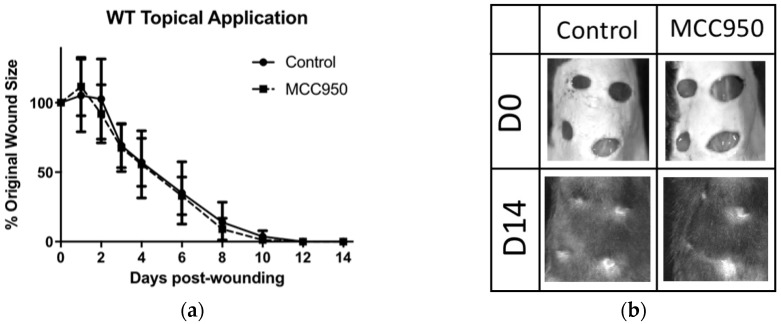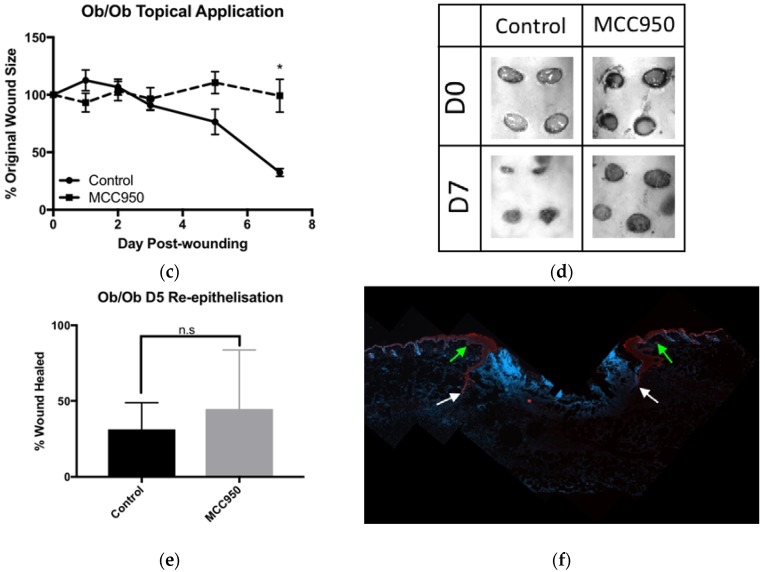Figure 1.
MCC950 appears to inhibit wound closure in diabetic mice when administered topically. (a) Comparing topically applied MCC950 vs. control, there was no significant difference in the rate of wound closure. (b) Representative photographs of wound closure on C57Bl/6 mice. (c) Comparing topical administration of MCC950 vs. control on obese mice with chronic wounds, the control mice had improved wound healing at D5 compared to MCC950. (d) Representative photographs of wound closure on Ob/Ob mice. (e) Histogram comparing re-epithelialisation between MCC950 and controls in Ob/Ob mice at D5 using keratin-14 staining. (f) Representative photomicrograph showing epithelial migration stained with keratin-14 (red) over the wound bed, stained with 4′,6-diamidino-2-phenylindole (DAPI) (blue). The last hair follicle before the opening of the wound (green arrows) was used to determine how far the epithelium had migrated along the wound bed (white arrows). N.s. = Not significant.


